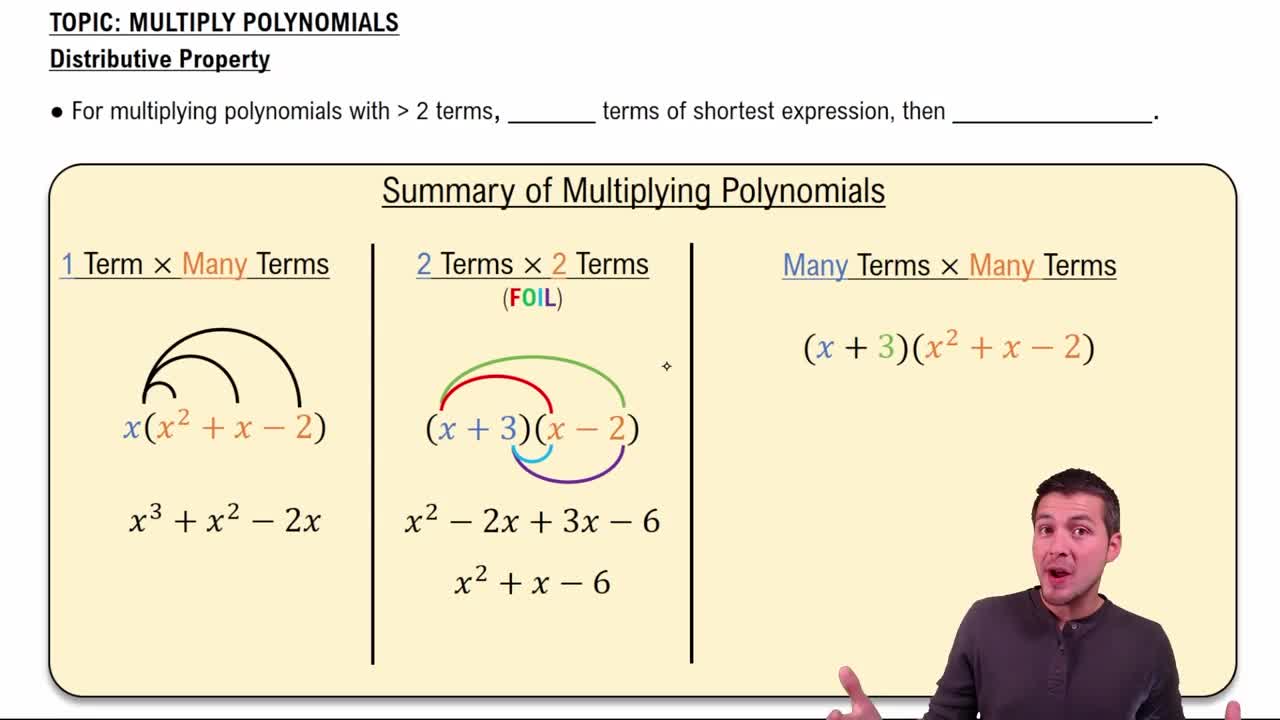Table of contents
- 0. Review of Algebra4h 16m
- 1. Equations & Inequalities3h 18m
- 2. Graphs of Equations43m
- 3. Functions2h 17m
- 4. Polynomial Functions1h 44m
- 5. Rational Functions1h 23m
- 6. Exponential & Logarithmic Functions2h 28m
- 7. Systems of Equations & Matrices4h 6m
- 8. Conic Sections2h 23m
- 9. Sequences, Series, & Induction1h 19m
- 10. Combinatorics & Probability1h 45m
0. Review of Algebra
Exponents
Problem 4a
Textbook Question
The reciprocal of 6/2 is 3/1.
 Verified step by step guidance
Verified step by step guidance1
Understand the concept of a reciprocal: The reciprocal of a fraction \( \frac{a}{b} \) is \( \frac{b}{a} \).
Identify the given fraction: The fraction provided is \( \frac{6}{2} \).
Find the reciprocal: Swap the numerator and the denominator of \( \frac{6}{2} \) to get its reciprocal.
Write the reciprocal: The reciprocal of \( \frac{6}{2} \) is \( \frac{2}{6} \).
Simplify the reciprocal: Simplify \( \frac{2}{6} \) by dividing both the numerator and the denominator by their greatest common divisor, which is 2.
 Verified video answer for a similar problem:
Verified video answer for a similar problem:This video solution was recommended by our tutors as helpful for the problem above
Video duration:
1mPlay a video:
Was this helpful?
Key Concepts
Here are the essential concepts you must grasp in order to answer the question correctly.
Reciprocal
The reciprocal of a number is defined as 1 divided by that number. For a fraction, the reciprocal is obtained by swapping its numerator and denominator. For example, the reciprocal of 6/2 is 2/6, which simplifies to 1/3. Understanding reciprocals is essential for operations involving division and fractions.
Recommended video:
Guided course

Parallel & Perpendicular Lines
Fractions
A fraction represents a part of a whole and consists of a numerator (the top number) and a denominator (the bottom number). In the case of 6/2, 6 is the numerator and 2 is the denominator, indicating that 6 is divided into 2 equal parts. Mastery of fractions is crucial for performing arithmetic operations and understanding ratios.
Recommended video:
Guided course

Radical Expressions with Fractions
Simplification
Simplification involves reducing a fraction to its simplest form, where the numerator and denominator have no common factors other than 1. For instance, the fraction 6/2 simplifies to 3/1, as both 6 and 2 can be divided by 2. This concept is vital for making calculations easier and clearer in algebra.
Recommended video:
Guided course

Multiply Polynomials Using the Distributive Property

 7:39m
7:39mWatch next
Master Introduction to Exponent Rules with a bite sized video explanation from Patrick Ford
Start learningRelated Videos
Related Practice













